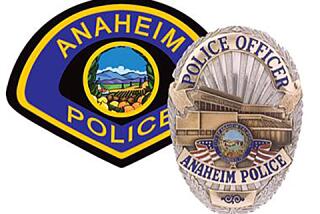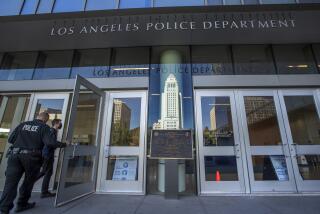The Fine Line Between Heroism and a Mistake : Shooting: Police confronted a youth who they believed had a gun. The decision was deadly.
- Share via
The tip came on Halloween: Tensions were running hot between two gangs in the Adams district, and there might be a drive-by shooting that night.
Undercover officers David Rosenberg and Donald Williams, with trash from their fast-food dinner still strewn in the back of their Oldsmobile, were cruising Hoover Street when they saw two carloads of teen-agers trading gang signals. With youngsters trick-or-treating nearby, the officers worried that the trouble might escalate.
The answer came quickly, according to police reports and court documents, and the outcome that night four years ago underscored the fine and often frustrating line between heroism and tragic mistakes in the policing of a violence-torn city.
One teen-ager in one car suddenly jumped out, wrapped a sweat shirt around his hand and pointed it at two rivals as they fled down the street. This was it, the officers figured. They sped up to the curb, within about 10 feet of the suspect.
Rosenberg yelled, “I’m a police officer--stop!” he recalled in his report.
Instead, the officers said, the youth--17-year-old Julio Cesar Moran, who had been in and out of juvenile halls for increasingly violent offenses--walked up to the officers’ car and raised his arms toward them with both of his hands wrapped in the sweat shirt.
The two officers fired--18 rounds in all. Seven shots hit Moran, killing him.
Only after the youth had fallen face-up on the sidewalk with the sweat shirt still wrapped around one hand did the officers discover the truth: There was no gun.
Prosecutors declared the shooting justified. They said that “(Moran) not only fooled the two gang members walking on the street, but the officers as well, and it cost him his life.”
As in dozens of previous cases, police ordered training for both men in light of errors that had put them at a “severe tactical disadvantage.” Their biggest problem, police found, was that they had confronted Moran so closely that they had little time to defuse the situation.
The case did not end there. Rosenberg later went on disability leave and began taking medication for anxiety because of the shooting, he said in a deposition. The city paid $165,000 this year to settle the Moran family’s claim.
The supervising investigator who was on the scene that night gave a deposition on the family’s behalf. He said he believed Moran died in “a bad shooting.”
“This young man was 17 years old,” investigator Zvoncko Pavelic said. “We can’t be going around doing these kind of things, and then send a green light to the officers: ‘Hey, buddy, everything you did was right.’ ”
Rosenberg, testifying in his own defense, said he had no choice. “Have you ever had a gun pointed at you?” the officer asked the plaintiff’s attorney. “He pointed his hands at me as if he was about to blow my face off.”
City by City
Here are the nation’s six biggest urban police departments and the number of people shot to death by officers last year. Los Angeles had the second-highest rate of fatalities per officer among the group, behind Washington, D.C.
DEPARTMENT OFFICERS 1993 FATALITIES FATALITY RATE* New York 28,249 27 1.0 Chicago 12,238 12 1.0 Los Angeles 7,800 21 2.7 Philadelphia 6,233 11 1.8 Washington, D.C. 4,424 13 2.9 Houston 4,201 10 2.4
* Per 1,000 officers
Source: Individual departments, 1993 U.S. Justice Dept. Uniform Crime Report
More to Read
Sign up for Essential California
The most important California stories and recommendations in your inbox every morning.
You may occasionally receive promotional content from the Los Angeles Times.










